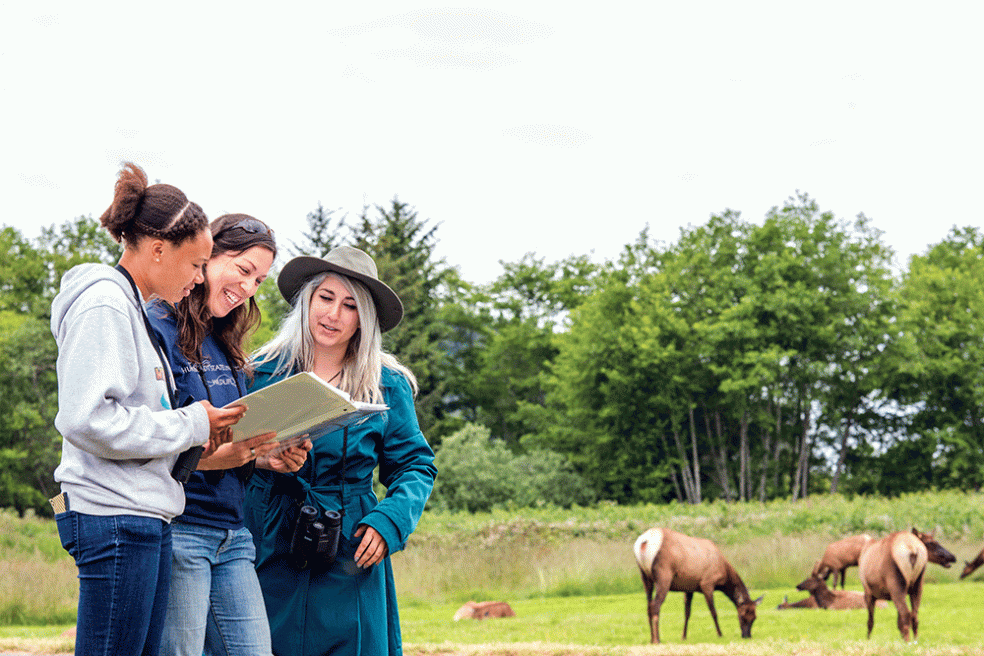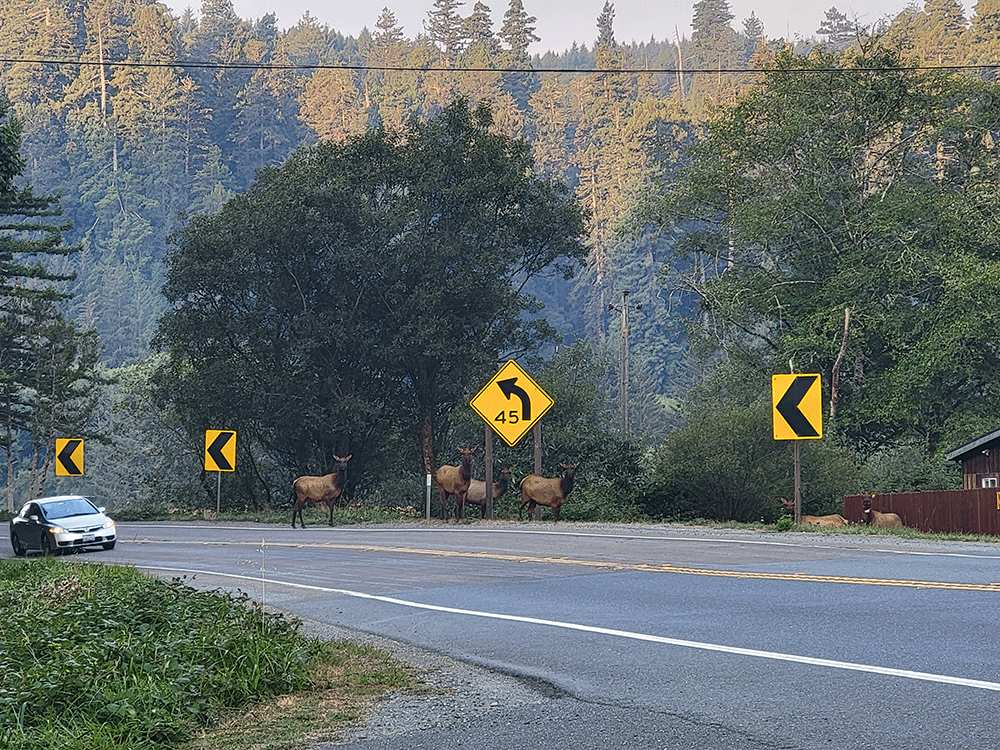
Micaela Szykman Gunther, Wildlife professor, and undergraduate and graduate students are focused on a particular stretch of highway near Stone Lagoon, about 30 miles north of Arcata, that the California Department of Fish and Wildlife has designated as an area of concern for traffic collisions with wildlife. They will research if warning signs installed along highways that signal to drivers when collared elk are on or close to the roadway will slow down drivers and reduce collisions.
Gunther has spent seven years monitoring elk along the North Coast, collaborating with biologists at the California Department of Fish and Wildlife to track their movements and other behaviors to better understand and conserve the species.
Preliminary data collection has begun for this study, which includes analyzing data on elk movements and road crossings to inform the design of the Electronic Detection System. With assistance from Caltrans, Gunther hopes to have the physical System in place by summer 2024.
Highways fragment elk and other wildlife habitats, serving as impediments to daily and seasonal movements. Crossing highways to access available habitat increases the chances of wildlife-vehicle collisions that affect both human and wildlife safety, as well as damage property. Implementing an Electronic Detection System that alerts drivers to a hazard (i.e., a large elk) on the roadway can mitigate damage and loss.
While the researchers will be putting collars on elk, their study will also focus on the behavior of another species: humans. The researchers will be developing signage that stands out from static wildlife crossing signs, and that will be triggered to flash lights when collared elk approach the roadway, similar to pedestrian crossing signage that has been adopted across California in the last decade.
Gunther and students will be observing how motorists respond to the signage to understand if they reduce their speed and, as a result, the number of wildlife-vehicle collisions and other incidents along the highway. “We have a strong collaboration - between Cal Poly Humboldt, the California Department of Fish and Wildlife, Caltrans, and Lotek (the technology company designing the software for the System) - and students are already working in the field (and at their computers) evaluating current road crossing behavior of elk in Humboldt and Del Norte counties.”
If the system is successful, it will facilitate elk movement success between fragmented habitats, habitat permeability, and survivorship, while decreasing risks to passing motorists. The system would also cost less than building above-highway crossing structures and eliminate the need for disruptive fencing.
Gunther says the system could be adopted for other types of wildlife and road crossings around California and beyond.
